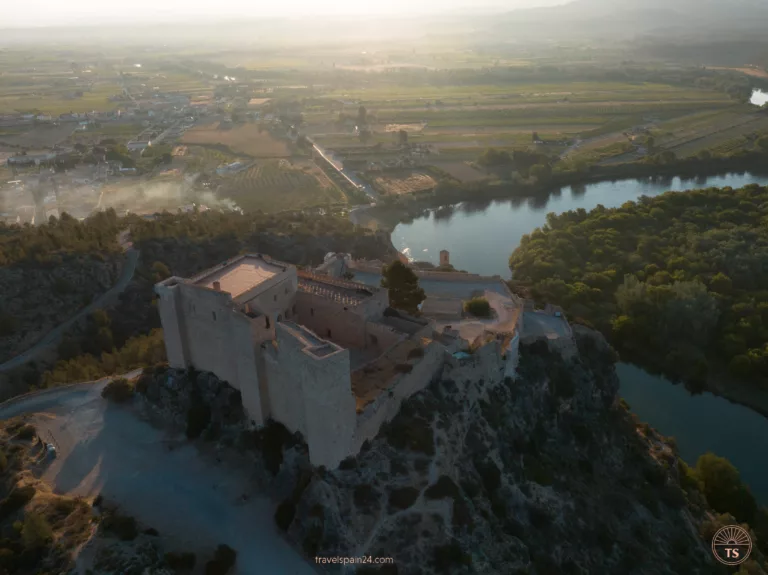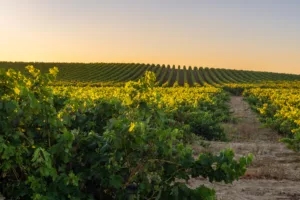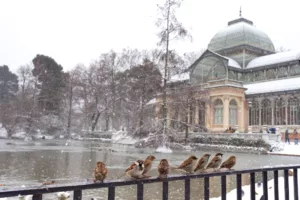What Awaits in Zamora? Explore the Best in Just 2 Days
We’re back, sharing a bit of our journey, this time through the scenic Ruta de la Plata. Our recent stop? The peaceful and inviting city of Zamora. We immediately fell in love right from our first steps into this city. There’s something special about Zamora that captivated us right away.
During our two-day stay, we discovered many lovely places that Zamora has hidden away. It’s a city with a calm pace, beautiful old buildings, and streets that lead you to serene spots, ideal for relaxing.
In this article, we’re excited to share our favorite spots in Zamora with you. We’ve found some places that stood out to us, and we think you’ll enjoy hearing about them.


Hi, we’re Timon & Filipa!
We travel across Spain and update TravelSpain24 with fresh content, practical tips, and personal stories from the road. Our goal is to help you experience Spain beyond the typical tourist trails.
Zamora’s Top Highlights
Zamora’s Castle

The Zamora Castle dates back to the 12th century. It was built during the Middle Ages, around the time when Zamora was an important strategic point due to its location on the border between Christian and Muslim territories in the Iberian Peninsula.
Although much of the castle is in ruins nowadays, you can still see its charm and importance. You can climb the castle tower to get a full view of Zamora. It might take some effort, but it’s worth it for the view. You can walk around the castle grounds at your own pace, enjoying the old-world feel, and it’s free to enter.
Zamora Cathedral

Zamora Cathedral, dating back to the 12th century, is known for its mix of Romanesque and Gothic styles. Inside, the choir area is highlighted, famous for its detailed wood carvings. You can also visit the treasury to see old religious items.
Aceñas de Olivares

The Aceñas de Olivares are charming old water mills situated along the Duero River in Zamora. Dating back to the Middle Ages, these mills were once used to grind grain into flour. They’ve been beautifully restored to keep their history alive.
When you visit, you can explore how people long ago harnessed the power of the river for their daily needs. The area around the mills is peaceful and perfect for a relaxing walk. These mills are some of the few remaining in Spain that still showcase ancient water-powered technology.
What to See and Visit
We spent two days in Zamora, a city of about 60,000 people. Zamora has a beautiful old town and a busy area with shops and places to eat. We took our time to see everything. We tried some tasty local food and just enjoyed being there. We even found some areas we didn’t know about before, making our trip memorable.
Duero River and Aceñas de Olivares
We started our day with a walk by the Duero River. You can see the Aceñas de Olivares — old water mills that have existed since medieval times. They should be on your itinerary because they show a piece of Zamora’s long history and also because they simply look beautiful by the river.

The city experiences quiet mornings. We enjoyed the sunrise and the sound of the water—it was a perfect place to start the day. Although you can come here any time of the day it feels just as peaceful.

Castle of Zamora
After, we made our way towards the castle of Zamora, a must-visit for anyone coming to Zamora. From the Aceñas de Olivares, we headed through the Bishop’s Gate.
Cathedral of Zamora
As you pass through, look to your left to see the Cathedral. We wanted to go inside, but it was still closed—it opens at 10 a.m. Remember, there’s a small fee to enter, and you can even check it out at night on Saturdays.
We recommend visiting their official website for exact prices and schedules.

Baltasar Lobo Museum
For those interested, make a quick stop by the Baltasar Lobo Museum just before reaching the castle. Here, you can see the work of Baltasar Lobo, a famous Spanish artist.

Continuing, we headed over to the castle, walking under an old arch and into the gardens. The castle is mostly just old walls now, but it’s still pretty impressive.

Don’t miss going up the tower! It takes some climbing, but the view from the top is fantastic. You can see all over Zamora from up there. It’s an excellent spot for some photos and to just take in how beautiful the city is.
The castle is an excellent place to visit, especially if you like history and enjoy great views. We loved it and think you will too!
Iglesia San Isidoro
After visiting the castle, it’s just a short walk to Iglesia San Isidoro. Heading straight from the castle, and you’ll soon see the church. Keep an eye out for the stork nests on the rooftops around here—they’re pretty impressive!

Iglesia San Isidoro is another peaceful place, nice for a little quiet time. It’s less busy, so you can enjoy the calm. We loved just sitting and watching the storks for a moment.
Iglesia de San Ildefonso and Santa María Magdalena
We took a short walk from Iglesia San Isidoro towards Iglesia de San Ildefonso and Iglesia de Santa María Magdalena. Keep walking along the same street from San Isidoro, and you’ll reach Iglesia de San Ildefonso first. This church has an impressive facade that stands out.

And walking a bit further, you’ll see Iglesia de Santa María Magdalena. Its distinctive round archway entrance makes it easily recognizable.
Plaza de Viriato
After visiting the churches, we continued our walk and found ourselves in Plaza de Viriato.

The open space of the plaza made it feel spacious and welcoming. This plaza is not just a pleasant spot to walk; it’s also where you’ll find the historic Parador de Zamora and the Museo Etnográfico de Castilla y León, both worth a visit for their rich history and cultural displays.
Mirador de San Cipriano
Near Plaza de Viriato, we took a break at the Mirador de San Cipriano, which offers stunning views of the city. Next to it is the Iglesia de San Cipriano, a charming old church. The peaceful atmosphere makes it an ideal place to relax and enjoy the surroundings.

Plaza Mayor
Just down the street, we reached Plaza Mayor, the busy center of Zamora. Here, we saw the Iglesia de San Juan de Puerta Nueva. Right in the plaza, there’s also the statue of the Merlú. This statue is important for Zamora’s Holy Week as it represents the people who announce the processions.
Plaza Mayor is full of life. There are many shops and places to eat. It’s a great spot to sit and watch people, listen to the chatter, and feel part of the city.
Mercado de Abastos
After leaving Plaza Mayor, we walked past the Palacio de los Momos and the Iglesia de Santiago del Burgo to the Mercado de Abastos. It’s a busy market where locals shop for fresh food, and we enjoyed watching the buzz of activity there. Not far from the market, we passed by the Iglesia de San Andrés.

Places to Eat in Zamora
We then returned to the main street for food at Bar Caballero, where we had really good tapas. After enjoying the tapas, we stopped by El Lobo – King of Pinchitos. This place is famous for its pinchitos, small skewers that are a must-try!!, and it’s got a great local feel.
Plaza Seminario
After lunch, we walked towards Plaza Seminario. This charming plaza is home to the Seminario Diocesano (menor y mayor) San Atilano and the Iglesia de San Andrés. The plaza itself is a peaceful spot with lovely architecture and a quiet atmosphere.

Iglesia de Santo Tomé and Santa María de la Horta
From there, we walked past the Museo Diocesano de Zamora. Continuing on, we admired the impressive exteriors of Iglesia de Santo Tomé and Iglesia Santa María de la Horta. Both churches stand out and highlight the historical beauty of Zamora.

Museo de Zamora
Our route led us through Plaza da Santa Lucia, where we saw the Palacio del Cordón and the Iglesia de Santa Lucía. Right next to these, we popped into the Museo de Zamora. It only cost 1 euro per person to get in, which was definitely worth it. We were pleasantly surprised by the museum’s exhibitions.

They had a great mix of local history, art, and cultural artifacts that really gave us a better understanding of Zamora’s background. The museum’s interesting displays were a standout part of our visit.

Medieval Bridge
We wrapped up our day at the Medieval Bridge, but it was closed for construction, so we couldn’t walk across. Even so, the area around the bridge was pretty nice. It’s the oldest bridge in Zamora and has seen a lot of history. We ended up watching the sunset from nearby, and it was still a peaceful way to finish our day.

Mirador de Puente Viejo
On our second day, we decided to take a relaxed walk to the other side of the river to the Mirador de Puente Viejo. It’s an easy walk and totally worth it. Once there, we found a cozy cafe where we could sit down, enjoy a drink, and have a bite to eat while looking at the beautiful views of Zamora. It was a perfect spot to just chill and take in the scenery.
After our break, we crossed the river again and wandered through the old part of the city, revisiting some of our favorite spots. It was a great way to soak in the calm and picturesque surroundings of Zamora.
Visiting Zamora in 2 days
That’s all from our Zamora trip! We saw a lot, but if you want to see each place inside, you should spread it over two days. You can see everything in one day if you like to keep moving.



















